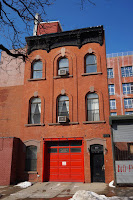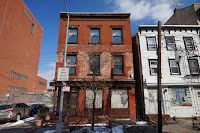 |
| Fireboat House - Brooklyn Ice Cream Factory |
 |
| Fireboat House Tower |
 |
| Fireboat House - Brooklyn Ice Cream Factory |
 |
| Fireboat House - Brooklyn Ice Cream Factory |
 |
| DUMBO Ferry Landing (Formerly Fulton Ferry Landing) in Brooklyn Bridge Park from Manhattan |
Flood-tide below me! I watch you face to face; Clouds of the west! sun there half an hour high! I see you also face to face.
Crowds of men and women attired in the usual costumes! how curious you are to me! On the ferry-boats, the hundreds and hundreds that cross, returning home, are more curious to me than you suppose; And you that shall cross from shore to shore years hence, are more to me, and more in my meditations, than you might suppose.
References:
- White, Norval, Willensky, Elliot, and Leadon, Fran AIA Guide to New York. Oxford University Press, 2010.
- “Goodbye to the Boathouse” New York Times print. 27, June 1982.
- Landmarks Preservation Commission Report 25 November, 1975.
- LeBoef, Randall J. “Robert Fulton and the Fulton Ferry” The Journal of Long Island History.




























